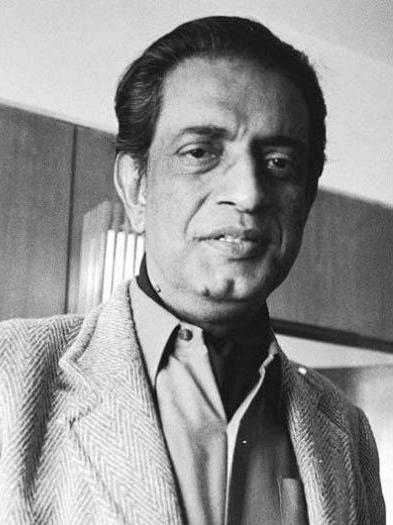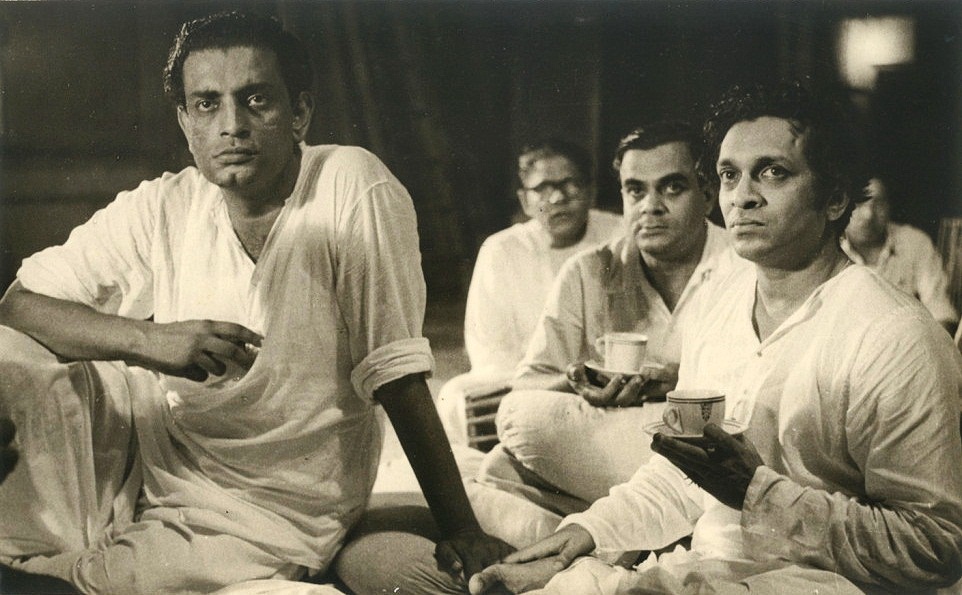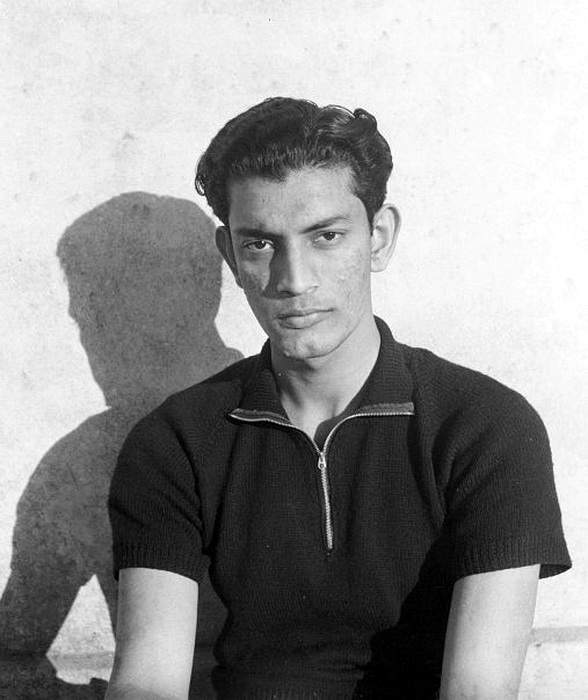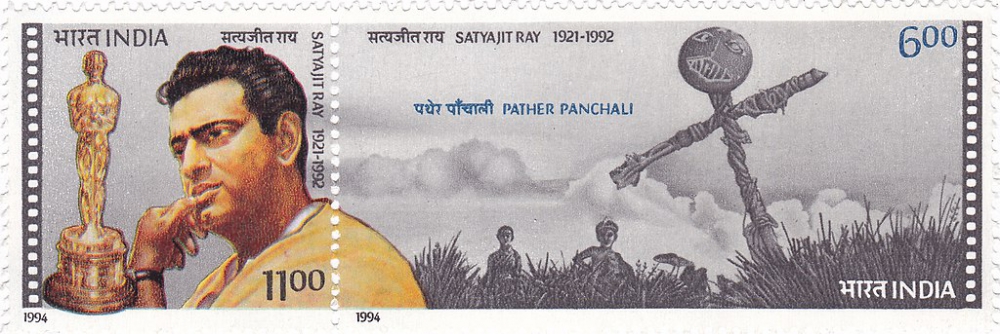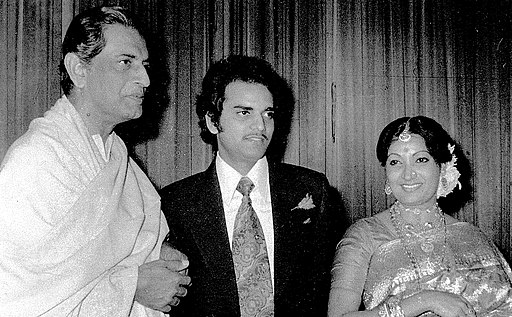Satyajit Ray
back| Full Name | Satyajit Ray |
| Born | May 2, 1921 |
| Birthplace | Calcutta, Bengal Presidency, British India (now Kolkata, West Bengal, India) |
| Died | April 23, 1992 |
| Buried | Keoratala crematorium, Kolkata, India |
| Married to | Bijoya Ray (née Dasgupta) (1949 - 1992) |
| Children | Sandip Ray |
| Notable films | Charulata - Shatranj Ke Khilari - Ghare Baire - Agantuk |
Satyajit Ray – The great “Manik-da” of cinematography
Satyajit Ray (1921–1992) was an iconic Indian filmmaker and author, renowned for introducing Indian cinema to the world stage. Born in Kolkata, Ray commenced his career as a commercial artist but soon transitioned to cinema, influenced by the neo-realist movement. His directorial debut, "Pather Panchali" (1955), the first installment of the acclaimed Apu Trilogy, garnered international recognition, winning awards at the Cannes Film Festival. This deeply humane portrayal of rural life in India established Ray's reputation as a master storyteller with a keen eye for detail and profound empathy.
Throughout his career, Ray continued to craft films that delved into diverse social, historical, and contemporary themes. Notable works include "Charulata" (1964), a poignant narrative on loneliness and unfulfilled desires; and "Shatranj Ke Khilari" (1977), a commentary on the British colonization of India.
In addition to his films, Ray was a prolific writer, illustrator, and music composer. He received numerous awards, including the honorary Oscar for Lifetime Achievement in 1992. His legacy endures, with filmmakers worldwide citing his profound influence on their work.
Satyajit Ray is often referred to as "Manik-da" by those in the Bengali film industry and by his admirers. The suffix "-da" is a colloquial honorific in Bengali, denoting respect, and "Manik" is a shortened version of his name. So, "Manik-da" is an affectionate and respectful term used to address or refer to Satyajit Ray in familiar circles.
Satyajit Ray - Biography and movies
Early Life and Education
Ray came from a family with a rich legacy in arts, literature, and science. He graduated from Presidency College in Kolkata with a degree in economics, later enrolling at Visva-Bharati University to pursue painting and visual arts. He developed an interest in filmmaking after watching films by masters like Jean Renoir and reading books on cinema during his time in London. Satyajit Ray was born in the east Indian town of Calcutta in 1921 as the only child from Sukumar Ray and Suprabha Das Gupta. His father was a poet and a writer of children books but he died when Satyajit was only 2 years of age. He then was taken in by his grandfather who gave Satyajit and his mother a new home. He went to high school in Calcutta and later studied economics at the University of Calcutta.
In these years he became a real movie enthusiast after seeing Western movies with Charlie Chaplin, Buster Keaton and Harald Loyd.
Film Career
Satyajit’s first career steps were not in the film industry but in advertising. He worked as a visual designer for a couple of advertising agencies including DJ Keymer (later Ogilvy). He made covers for many books like Nehru’s “Discover of India” and “The Lost Army” of Ferari Fouj.
It was also book that inspired Ray to get into filming. Pather Panchali was a classic Bengali book that was being re-adapted as a children’s book. Ray would make the illustrations and the cover but it was the story that gave him the idea of making a movie out of it.
At the end of World War II Ray got acquainted with some American soldiers who invited him to see Western movies in the city of Calcutta. He became a real cinema buff and studied all aspects of (mostly) western movies. His passion led him to found the Calcutta Film Society in 1947. The showed many western and Russian movies and Ray kept studying all aspects of movie making. But it was the contact he made with French movie director Jean Renoir that gave the final push to his new carreer.
Renoir came to Calcutta to film his movie The River and Satyajit Ray helped him in finding the best shooting locations. He told Renoir about his idea of making a movie out of the book Pather Panchali and it was through the encouragement of Renoir that Ray dared to make his dream a reality. The final push was his visit to London in 1950 where he went working for the London branch of advertising agency Ogilvy. He stayed there for 6 months and in that time he saw almost 100 movies. The inspiration he got from all these new movies made Ray decide to plunge into the cinematic world.
In 1955 Ray finished "Pather Panchali" which was a pioneering work that placed him and Indian cinema on the world map. It was the first installment of the acclaimed Apu Trilogy, followed by "Aparajito" (1956) and "Apur Sansar" (1959). His films often dealt with socio-economic issues and complex character narratives.
Ray’s most important films
- "Charulata" (1964)
- "Shatranj Ke Khilari" (1977)
- "Ghare Baire" (1984)
- "Agantuk" (1991), among many others.
List of movies directed by Satyajit Ray:
1955: "Pather Panchali" (Song of the Little Road)
This debut film follows the childhood of Apu, living in rural poverty with his family, capturing the bittersweet realities of life with expressive visuals and compelling storytelling.
1956: "Aparajito" (The Unvanquished)
The second in the Apu Trilogy, it showcases Apu's adolescence, his mother's struggle to provide for him, and his eventual move to Calcutta for higher studies.
1958: "Jalsaghar" (The Music Room)
This film tells the story of a declining aristocrat and his efforts to uphold his family prestige, even amid financial ruin, with a focus on his magnificent music room.
1959: "Apur Sansar" (The World of Apu)
Concluding the Apu Trilogy, it deals with Apu’s adulthood, his tragic marriage, and eventual acceptance of fatherhood.
1960: "Devi" (The Goddess)
Set in 19th-century rural India, the film explores superstition and religion when a father-in-law believes his daughter-in-law to be an incarnation of the goddess Kali.
1962: "Kanchenjungha"
Ray’s first original screenplay about an upper-class family on holiday in the Himalayas, dealing with themes like arranged marriage and the generational gap.
1964: "Charulata" (The Lonely Wife)
Focused on Charulata, a lonely wife who develops feelings for her cousin-in-law, it delicately explores solitude, longing, and platonic relationships.
1971: "Seemabaddha" (Company Limited)
The film dives into corporate life and moralities as it follows the life of an ambitious executive, exploring themes of ethics and personal integrity.
1977: "Shatranj Ke Khilari" (The Chess Players)
Set against the backdrop of the Indian rebellion of 1857, it juxtaposes the obsession of two noblemen with chess against the socio-political upheaval of the time.
1980: "Hirak Rajar Deshe" (Kingdom of Diamonds)
This is a sequel to "Goopy Gyne Bagha Byne", a musical fantasy adventure film. The protagonists are granted three wishes and in this sequel, they oppose an oppressive ruler with the power of music.
1991: "Agantuk" (The Stranger)
Ray’s last film revolves around a woman whose uncle, presumed dead, returns after 35 years, sparking questions about identity, belonging, and civilization.
Style and Themes
Ray’s films were often rooted in reality, offering commentary on contemporary social issues with a strong humanistic approach. His characters were deeply relatable, and his stories were potent with emotive strength. He was also known for his innovative use of music, often composing scores for his own films.
Analysis of Satyajit Ray’s style of filming
Satyajit Ray is one of the most revered filmmakers in the history of cinema, and his distinct style has garnered international acclaim. Here's a look at the key elements of his film style and what set him apart:
- Humanism: Central to Ray's cinematic universe is a deep-seated humanism. His films often delve into the complexities of human relationships, societal norms, and individual aspirations. Works like "Pather Panchali" and "Aparajito" are testimonies to his compassionate portrayal of everyday life and its challenges.
- Realism: Ray's films often mirror the socio-economic and political realities of the time. He drew heavily from real-life situations, leading to a profound sense of realism in his narratives.
- Cinematic Techniques: Ray was known for his innovative use of camera, sound, and editing. His shots were often meticulously composed, with a strong emphasis on naturalism. His use of diegetic sound, where the audio originates within the film's world, added layers of authenticity.
- Narrative Pacing: Ray's storytelling was deliberate and paced to allow viewers to immerse themselves in the world he depicted. This pacing is evident in films like "Charulata", where character development and mood take precedence over rapid plot progression.
- Versatility: While Ray is best known for his realistic dramas, he was also adept at making detective stories (like the Feluda series), fantasies, and even science fiction. His range as a filmmaker was vast, and he could handle different genres with equal finesse.
- Music: An accomplished composer, Ray often created the scores for his films. His musical interludes, whether in "Goopy Gyne Bagha Byne" or the more somber "Teen Kanya", were integral to the narrative structure and mood of his films.
- Collaboration: Ray's collaboration with certain actors, cinematographers, and writers became a defining aspect of his cinema. His association with the actor Soumitra Chatterjee, who starred in many of his films, is legendary.
- Social Commentary: Many of Ray's films provide subtle, yet incisive, commentary on societal norms, the caste system, gender roles, and the urban-rural divide. "Ghare-Baire" (The Home and the World), for instance, explores nationalism, love, and empowerment.
What truly set Ray apart was his ability to capture the universality of human emotions, making his films resonate with audiences not just in India, but around the world. His profound understanding of characters, combined with his technical prowess, ensured that his films remain timeless classics.
Writing and Other Contributions
Beyond cinema, Ray was an accomplished writer and illustrator, creating numerous works of fiction, including the popular detective series featuring the character Feluda and the sci-fi character Professor Shonku. He also contributed substantially to children's literature.
Awards and Honors
Over his career, Ray received numerous awards, both nationally and internationally, including:
- 32 National Film Awards by the Government of India
- The Golden Lion at the Venice Film Festival for "Aparajito" (1956)
- The Honorary Award at the Oscars (1992) for Lifetime Achievement
- The Bharat Ratna, India’s highest civilian award, in 1992
Personal Life
Ray was married to Bijoya Ray, and they had a son, Sandip Ray, who is also a film director.
Death and Legacy
Satyajit Ray passed away on April 23, 1992. He died of complications due to heart failure. He had experienced health problems throughout his life. His works, deeply rooted in the cultural and socio-political context of Bengal and India at large, transcended borders, earning acclaim on the global stage and cementing his place as one of cinema’s all-time greats.

